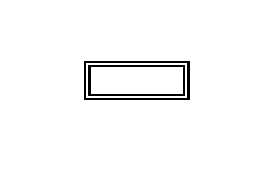T.O. 33B-1-1
k.
The effectiveness of the demagnetization process.
1.6.8.3
Post Cleaning.
Visually inspect parts for the following:
a.
Assure all inspection materials are removed.
b.
Assure all masking and plugging materials are removed.
1.6.9
Quantitative Quality Indicators.
The QQIs, introduced in (chapter 3), are potentially very useful as both a process control tool and a technique
development tool.
1.6.9.1
Introduction.
Quantitative Quality Indicators (QQIs) used in magnetic particle and magnetic rubber inspections are also
called shims. They are used to evaluate the effectiveness of the applied magnetic fields for the two inspection
methods.
1.6.9.1.1
In the absence of a cracked-part reference standard, QQIs offer a valid method of assessing the adequacy of
an inspection procedure. QQIs indicate the direction and strength of the applied magnetic fields. As such
they are also useful in assessing the performance of equipment and materials associated with either magnetic
particle or magnetic rubber methods General Information.
1.6.9.1.2
CAUTION
Exercise care when using QQIs on curved surfaces. Excessive bending will
damage a QQI beyond use.
Usually the thinner QQI will be used on curved surfaces; however they are fragile. The thicker QQI is less
fragile but can still be damaged by excessive bending.
1.6.9.2
Instructions for Use.
WARNING
Cleaning solvent, MIL-C-38736, is f lammable and moderately damaging to
the skin, eyes and respiratory tract. To prevent injury, rubber gloves and
goggles are required. Good, general ventilation is normally adequate.
NOTE
Use of a QQI will require a second magnetic particle or magnetic rubber
inspection (without the QQI) if the QQI is placed in an area where an actual
crack could be present.
1.6.9.2.1
The area where the QQI is to be placed shall be thoroughly cleaned and dried. Use cleaning solvent, MIL-C-
38736. Place the appropriate QQI in place with the slot side against the surface of the part. In general, the
30% deep slot is adequate for most defects. For very critical inspections, the 15% deep slot may be required
and for rough castings or weldments the 60% slot may be more appropriate.
Change 2
1-47




